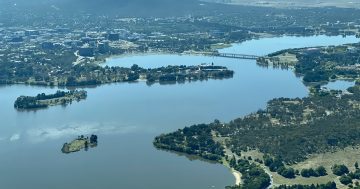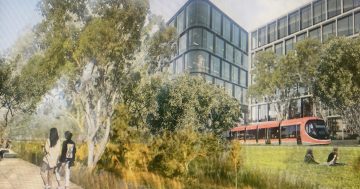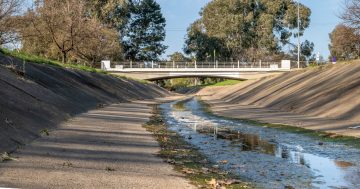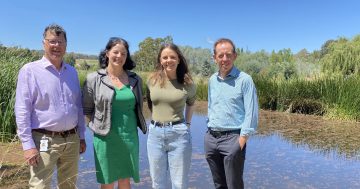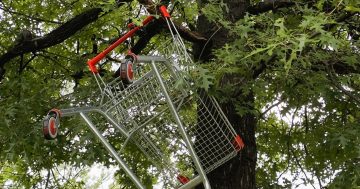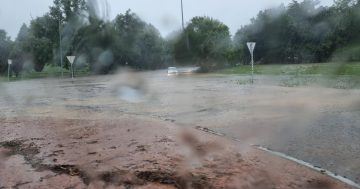
What was once concrete is now native grasses and dirt. Photo: ACT Government.
Canberra’s stormwater channels are slowly but surely turning back into the natural creeks they were concreted to replace.
Native plants and grasses now occupy a 500-metre section of Tuggeranong Creek near the Calwell Shops after nine months of earthworks, and there’s a lot more to come.
“The main elements were the filtration ponds,” Toby Dunford from Cord Civil explained at the official opening on Tuesday (11 June).
“There are five filtration ponds you can see all the way down the channel, which will obviously act as the main water filtration element.”
The $3.8 million project is one of 25 under the $85 million ‘Healthy Waterways’ program the ACT and Federal governments have rolled out across the catchments for Lake Tuggeranong, Yarralumla Creek, Lake Burley Griffin, Lake Ginninderra, Yerrabi Pond and Ginninderra Creek in West Belconnen.
The aim is to fix a problem created during Canberra’s development in the 1970s and 1980s.
“During the development of our city, we used to think that concrete drains were good enough to handle floods and move water away,” Minister for Water, Energy and Emissions Reduction Shane Rattenbury said when he announced work on the Calwell drain in 2023.
“But now we’ve learned that using natural drains, which blend in with the environment, not only do a better job of preventing floods but also help protect our local plants and animals.”
In 2019, the ACT Government built what was described at the time as the Southern Hemisphere’s “largest rain garden” at the entrance to Lake Tuggeranong. Other smaller ponds and rain gardens were constructed nearby.
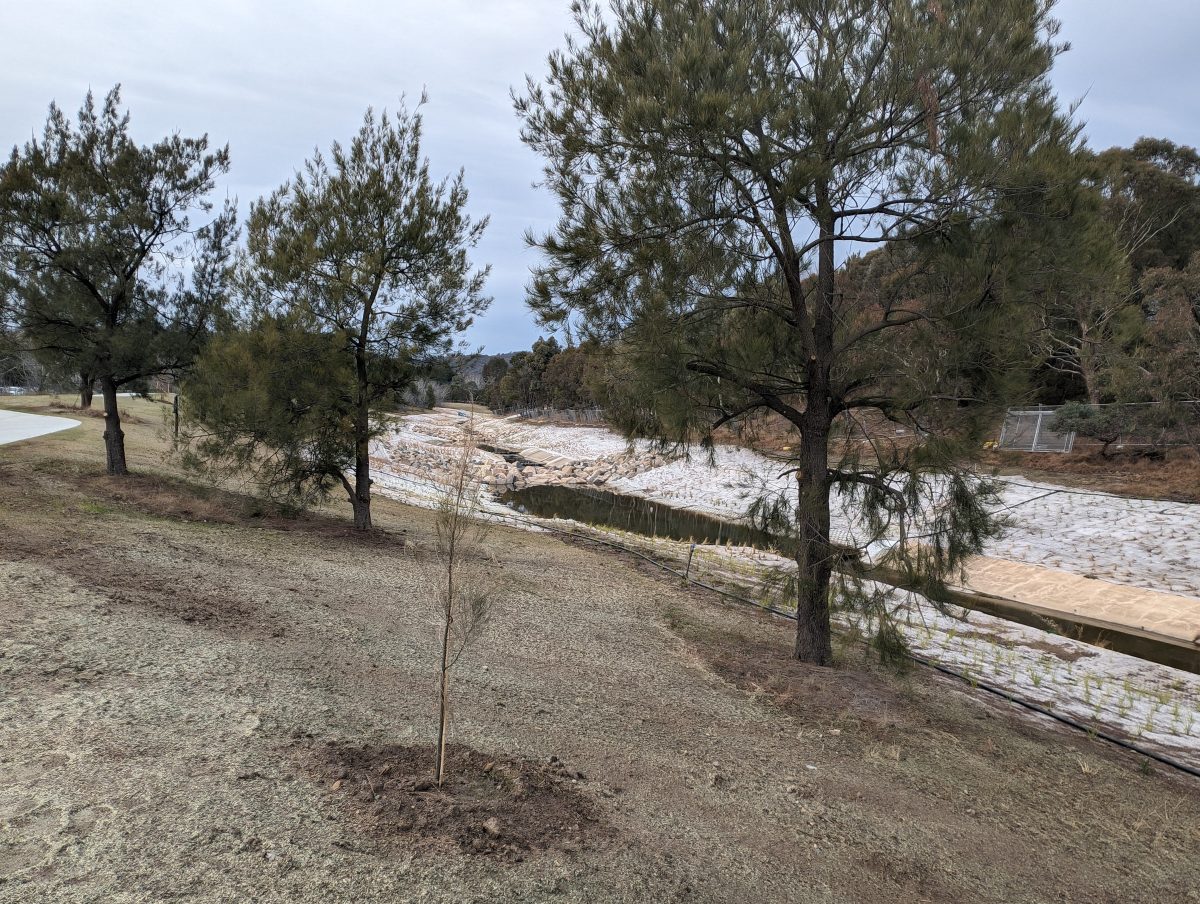
The government plans to construct similar natural creeks and ponds throughout Tuggeranong. Photo: ACT Government.
This wetlands-type environment was designed to slow and filter the water rushing down the concrete channels. According to a report released in the aftermath, it is “helping to clean stormwater flows entering the lake”, but “more work is needed to address algal blooms”.
This is where the stormwater channels come in.
“A project like this is about slowing the water down, removing the nutrients from the water so they don’t flow into the lake,” Mr Rattenbury said on Tuesday.
“They’ll actually soak into the natural surface. The plants will soak up those nutrients and really improve the quality of the water flowing into the lake.”
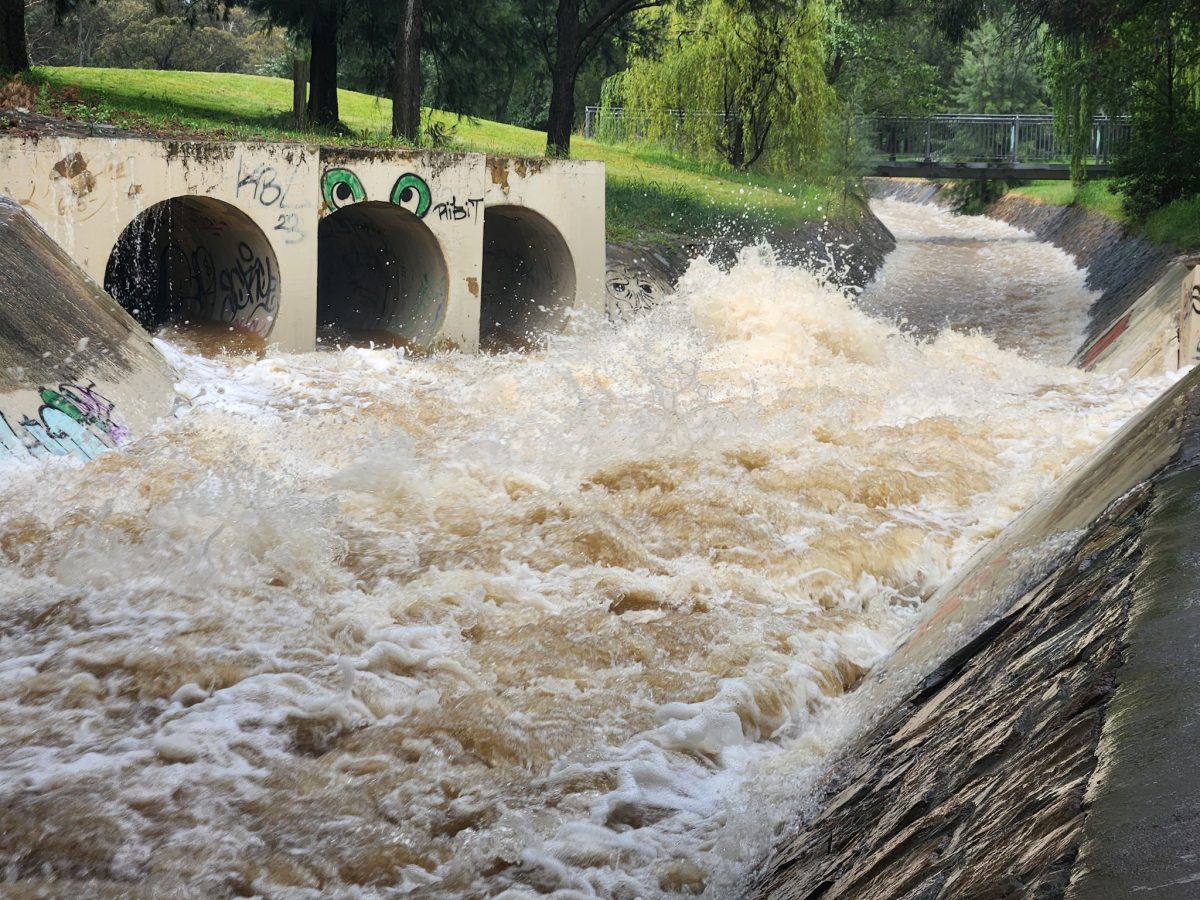
It doesn’t take much for water to build up significant speed in a concrete channel, as seen during a deluge on 13 January 2024. Photo: Shelby Powell.
In the years to come, the lake’s other tributaries will be converted back into a mix of natural creeks and rain gardens (aka, ponds), including in Chisholm (where it will help water the district playing fields), Fadden, Gowrie, Erindale, and – because they’re the worst offenders for pollution entering the lake – Kambah and Wanniassa.
It’s hoped the combined effect of these projects – and other new channel restorations, raingardens and ponds – will play an important role in reducing the phosphorus in Lake Tuggeranong that drives blue-green algal blooms every summer.
According to ACT Healthy Waterways program manager Dr Ralph Ogden, there will also be other benefits.
“Naturalisation projects like these are really important, not just for cleaning up Lake Tuggeranong, but you get benefits for biodiversity – you might have seen ducks fly past a couple of minutes ago – you get urban heat benefits, so the area will be a little cooler because of this,” he said.
“All values are improved. Some people will enjoy visiting the site and the amenity of it.”
The government is planning the same for Sullivan’s Creek in the city and working with UC on ways to clean up Lake Burley Griffin.
During the consultation period earlier this year, locals said they “disliked the concrete drains, litter and graffiti, stagnant pools and associated algae outbreaks”.
“Many respondents felt the creek looks neglected,” the listening report published in February 2024 read.
Up to 30 per cent of the 290 respondents said they wanted Sullivan’s Creek turned into a more natural waterway, such as “a meandering creek, chain of ponds, swampy meadows and/or wetlands, to create pools and ponds for native animals”.
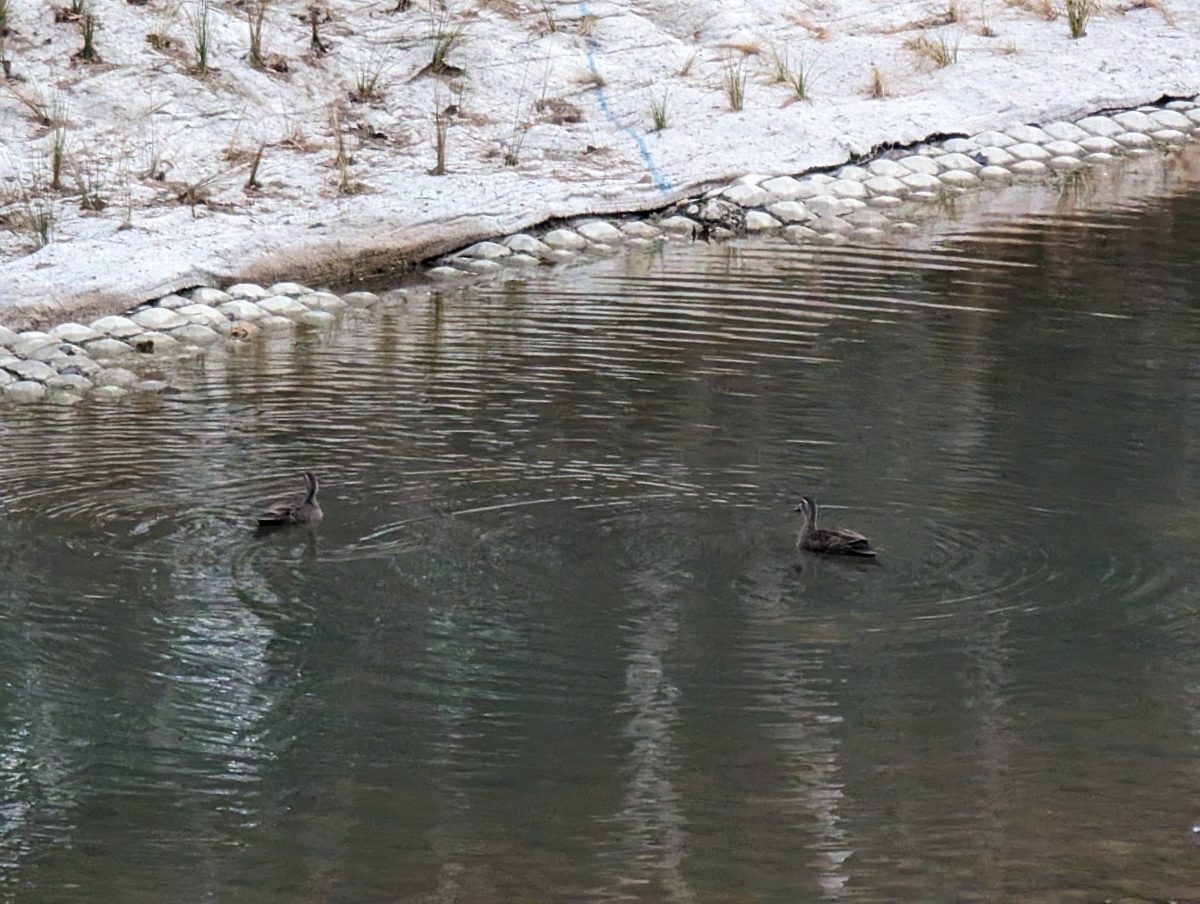
Ducks enjoying the new-look Tuggeranong Creek. Photo: ACT Government.
Mr Rattenbury said the combined effect of the re-naturalisation projects will take time to show results.
“The problems in Lake Tuggeranong have built up over many years, so it’s not an instant fix … There’s been a lot of scientific research into what’s coming into the lake – where it’s coming from and how we can take some of those nutrients out … It starts right at the top of the catchment and we’re gradually working our way down and looking at a range of different projects to make sure the signs we’re getting are good.”
The government is also refreshing its 2014-2044 ACT Water Strategy, currently open for feedback on the YourSay Conversations website.
“There will be a whole bunch of stuff around us changing our practices – governments, businesses and residents changing how they operate how they deal with leaves and grass, and then some ideas around new infrastructure,” Mr Rattenbury said.















